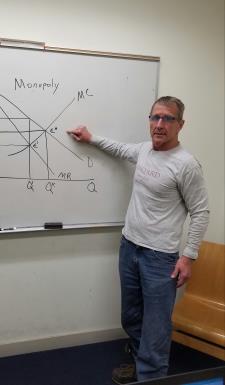
Lenny D. answered • 01/06/20
Former Tufts Economics Professor and Wall Street Economist
There are many ways to skin this kitty Cat. We Know we need MRS =Px/(Ps(1-s)) = 1/(1-s)
So, (S-6)/(xd-3)=(S-6)/(Xc-3) =(1/(1-s) =(30-6)/(15-3) = 24/12 =2 so 1-s =1/2 or s= 50 cents.
For Curry. He would buy 21 Sc with half coming out of his pocket (21)/(2) the other (21)/2 Is paid for by the social planner. So, if we taxed Curry 21/2 in a lump sum fashion he would have an effective budget constraint of 25.5 =Xc +(1/2)Sc. He will buy 21 seats and spend the remaining $15 on other stuff (Xc). Durand will be buying 9 seats. So he will be getting (9/2) at the cash register in subsidies. If we taxed him 9/2 dollars his budget constraint becomes Yd=19.5 = Xd+(1/2)sd. He will buy 9 seats and spend the remaining 15 dollars on other stuff.
a) Suppose instead the social planner wishes to tax the consumption of x with the tax proceeds going back to each player what tax rate would be Revenue neutral and generate the same outcome? This is just the flip side of the same coin. The subsidy mad Seats relatively cheaper and it is Relative prices that matter. We set MRS= Px(1+t)/Ps= (1+t)= (S-6)/(xd-3)= (s-6)/(Xc-3)=24/12 or 1+t=2 or t= 1 dollar. We collect 15 dollars in taxes from each. If we give a LUMP SUM Tax Rebate of $15 to both players their budget constraints would be Yc= 51= sc +2Xc and Yd= 39 = sd+2Xd Let’s look at Curry’s Consumption opportunity set given Durand buys 9 seats. We are taking away 10.5 Dollars in taxes however, seats now only cost him ½. The maximum number of total seats is now 25.5*(1/2) =51 plus the nine seats Durand is picking up.. The opportunity cost of buying one more unit of X is 2 seats. The slope of his opportunity set is -2. Where S=30 and Xc=15. We have a tangency. The Subsidy cum lump sum tax and tax with lump sum rebates generate identical results. This is not a special case!!




